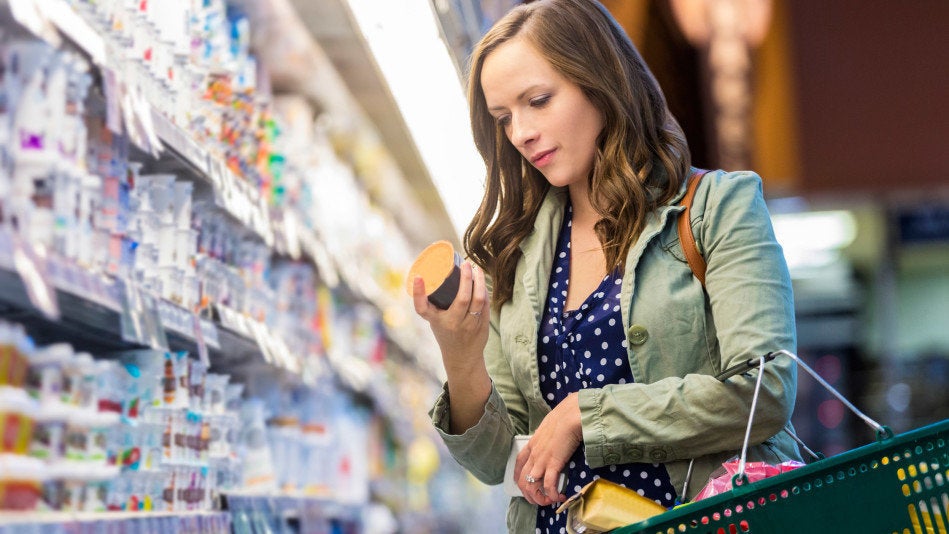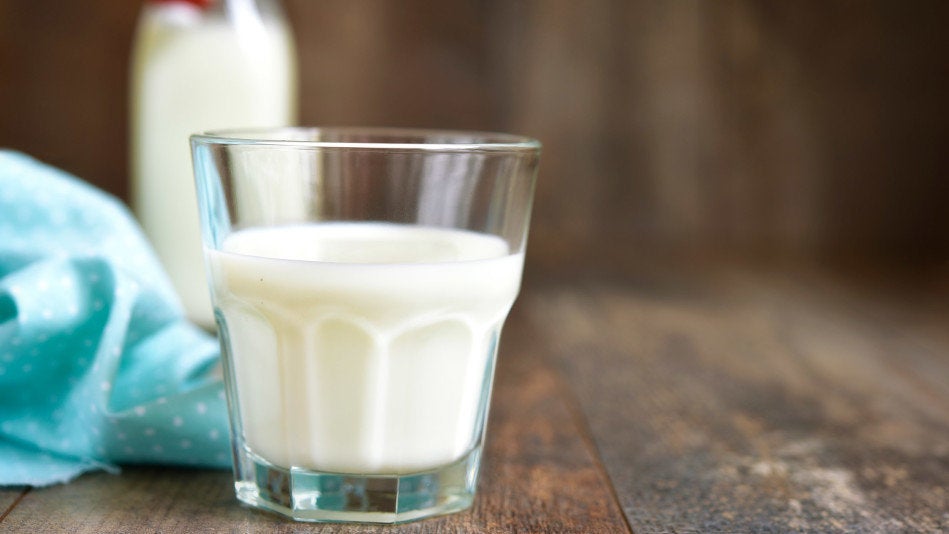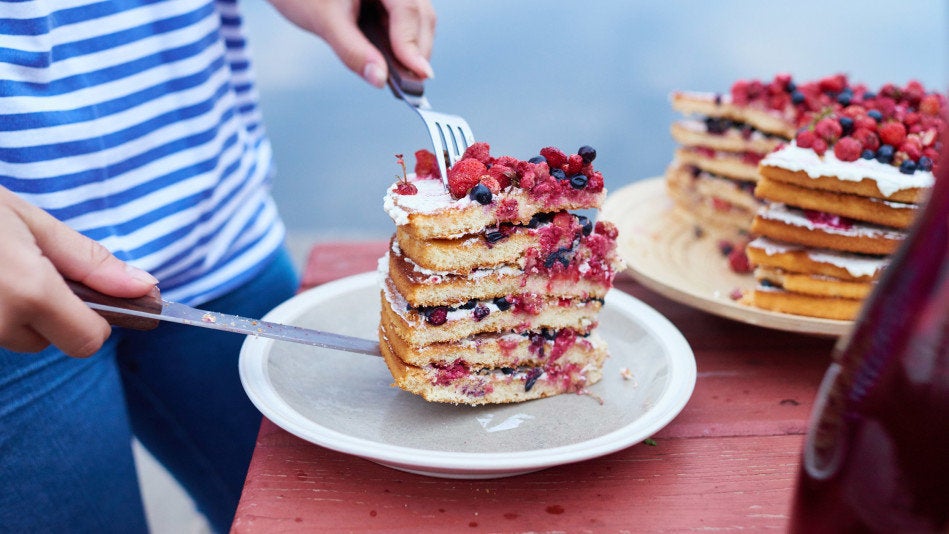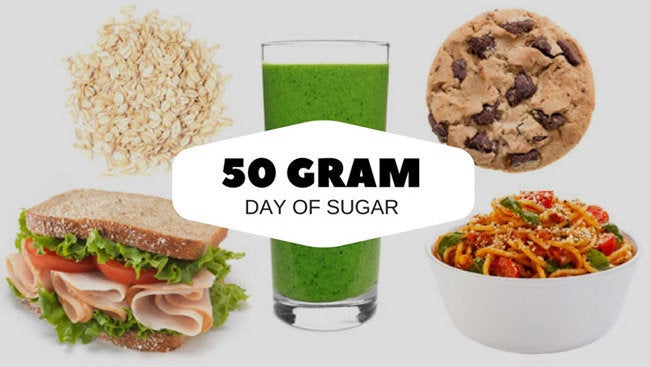
YelenaYemchuk via Getty Images
It turns out, after hitting an all-time high back in 1999, annual sugar consumption has been on a steady decline—down to 131 pounds per person as of 2014, according to the USDA. But if you’re looking to reduce your sugar intake even further, here are a few simple strategies.
1. In the Fine Print

asiseeit/iStock
Even health-food stores have shelves filled with foods that contain added sugars, says Brigid Titgemeier, MS, RDN, LD, a registered dietitian nutritionist with the Cleveland Clinic Center for Functional Medicine. That's why reading the ingredients list is so incredibly important.
When checking the label, remember that sugar goes by more than 50 different aliases, explains Nicole M. Avena, PhD, neuroscientist, food addiction expert and author of Why Diets Fail (Because You're Addicted to Sugar). A simple trick to ID a lot of them: Look for any ingredients that end with "ose." Some examples include dextrose, fructose, glucose, lactose, maltose and sucrose. If any "oses" crack the top five listed ingredients—labels list ingredients in order of quantity, from most to least—shop for another option, Avena says.
When checking the label, remember that sugar goes by more than 50 different aliases, explains Nicole M. Avena, PhD, neuroscientist, food addiction expert and author of Why Diets Fail (Because You're Addicted to Sugar). A simple trick to ID a lot of them: Look for any ingredients that end with "ose." Some examples include dextrose, fructose, glucose, lactose, maltose and sucrose. If any "oses" crack the top five listed ingredients—labels list ingredients in order of quantity, from most to least—shop for another option, Avena says.
2. In the Milk Section

Lilechka75/iStock
Nondairy alternatives like rice, almond and soy milk continue to grow in popularity but many varieties surprisingly contain 16 or more grams of added sugars per cup—as much as you'll find in a glazed donut.
Flavored varieties are especially prone to being high in the sweet stuff, Titgemeier says, noting that many labels list sugar as the second ingredient, right after almond milk.
"Swapping out one variety for another can cut your sugar intake by 10 or 20 grams per day, and that's meaningful," says Georgie Fear, RD, registered dietitian and author of Lean Habits for Lifelong Weight Loss. "Not only does it reduce the empty calories, but it helps reset your taste buds, so you don't expect things to all taste so sweet, and you can more easily cut sugar going forward."
Flavored varieties are especially prone to being high in the sweet stuff, Titgemeier says, noting that many labels list sugar as the second ingredient, right after almond milk.
"Swapping out one variety for another can cut your sugar intake by 10 or 20 grams per day, and that's meaningful," says Georgie Fear, RD, registered dietitian and author of Lean Habits for Lifelong Weight Loss. "Not only does it reduce the empty calories, but it helps reset your taste buds, so you don't expect things to all taste so sweet, and you can more easily cut sugar going forward."
3. On Social Media

3 On Social Media
Research published in early 2017 found that the less involved you are in serving yourself sweet treats (think: someone else hands you an ice cream cone or cuts you a slice of cake), the more apt you are to eat up—and in jumbo portions. After all, if someone else is doing the serving, you don't have to accept responsibility for what you throw down the hatch. But, on the flip side, if you accept responsibility for what you do (by filling your own plate at mealtime), you'll wind up making healthier food decisions, according to the study.
One additional step you could do to manage your portions is to post a photo of everything you eat to a social channel like Instagram. "I've had a client find this really helped them think about their decisions, even the small ones like grabbing bites of food from a companion's plate," Fear says. If you prefer to keep things private, try starting an account for just a few healthy-eating friends or accountability buddies to follow.
Bonus Tip
If you're finding it hard to cut back because of sugar cravings, you might want to get more shut-eye. A small study published in the journal SLEEP in 2016 found that cutting your sleep short increases levels of naturally circulating cannabinoids—the same chemicals responsible for giving pot smokers the munchies.
"Studies have supported that at least seven hours is a meaningful tipping point, so if eight or nine won't fit, shoot for getting at least seven," says Fear.
One additional step you could do to manage your portions is to post a photo of everything you eat to a social channel like Instagram. "I've had a client find this really helped them think about their decisions, even the small ones like grabbing bites of food from a companion's plate," Fear says. If you prefer to keep things private, try starting an account for just a few healthy-eating friends or accountability buddies to follow.
Bonus Tip
If you're finding it hard to cut back because of sugar cravings, you might want to get more shut-eye. A small study published in the journal SLEEP in 2016 found that cutting your sleep short increases levels of naturally circulating cannabinoids—the same chemicals responsible for giving pot smokers the munchies.
"Studies have supported that at least seven hours is a meaningful tipping point, so if eight or nine won't fit, shoot for getting at least seven," says Fear.
Advertisement
